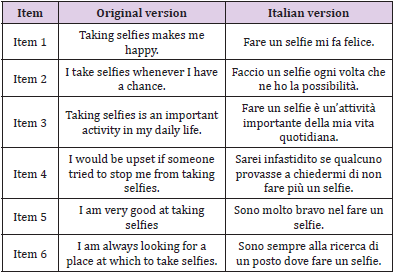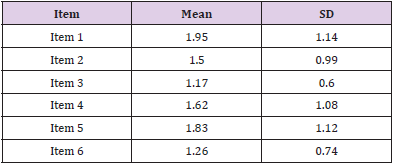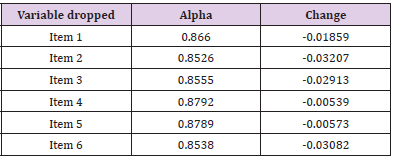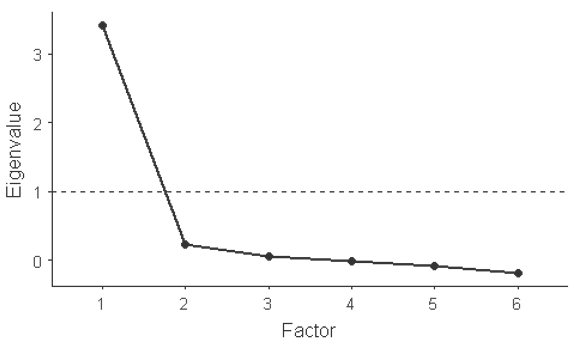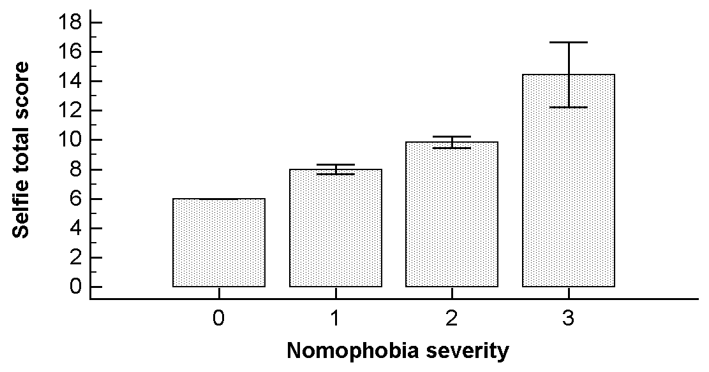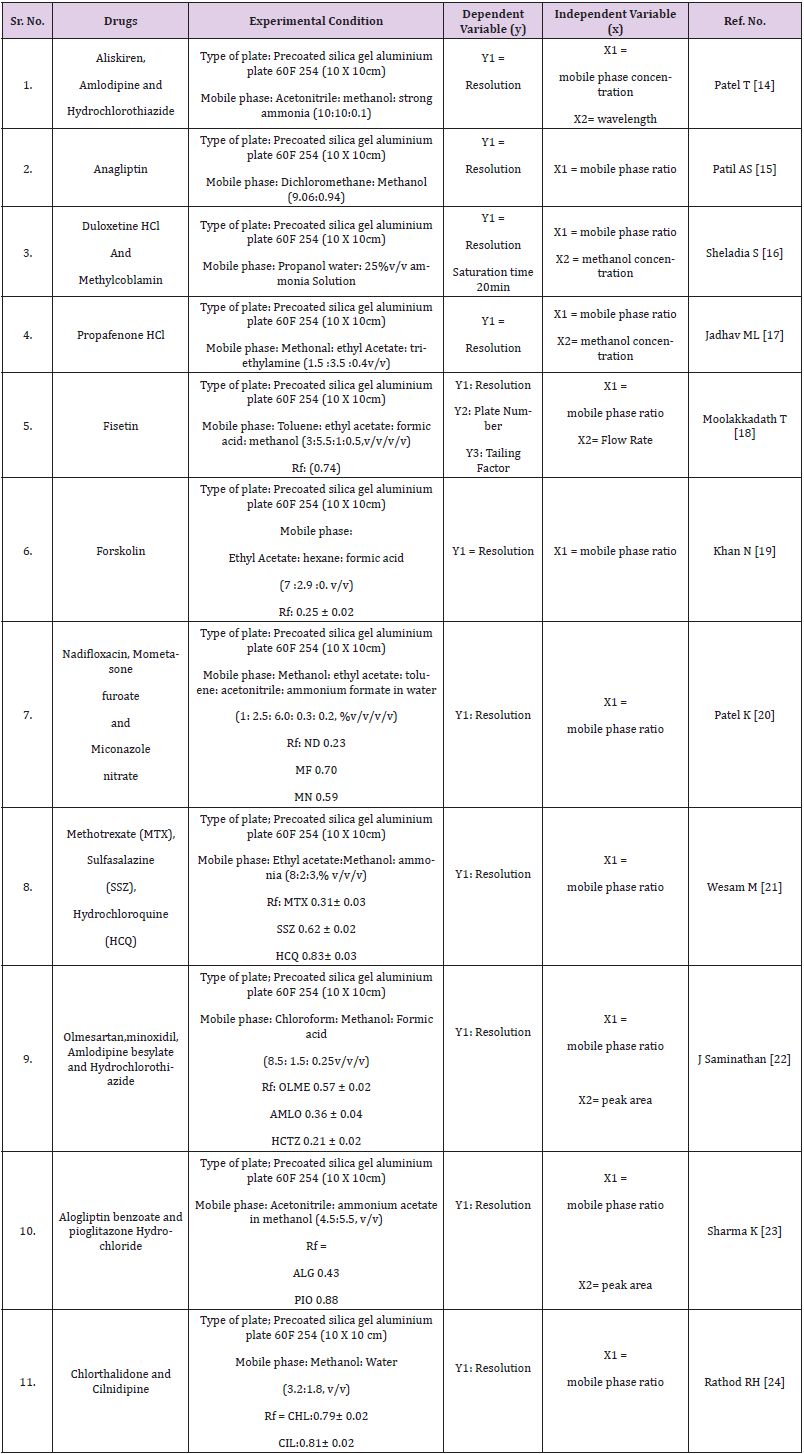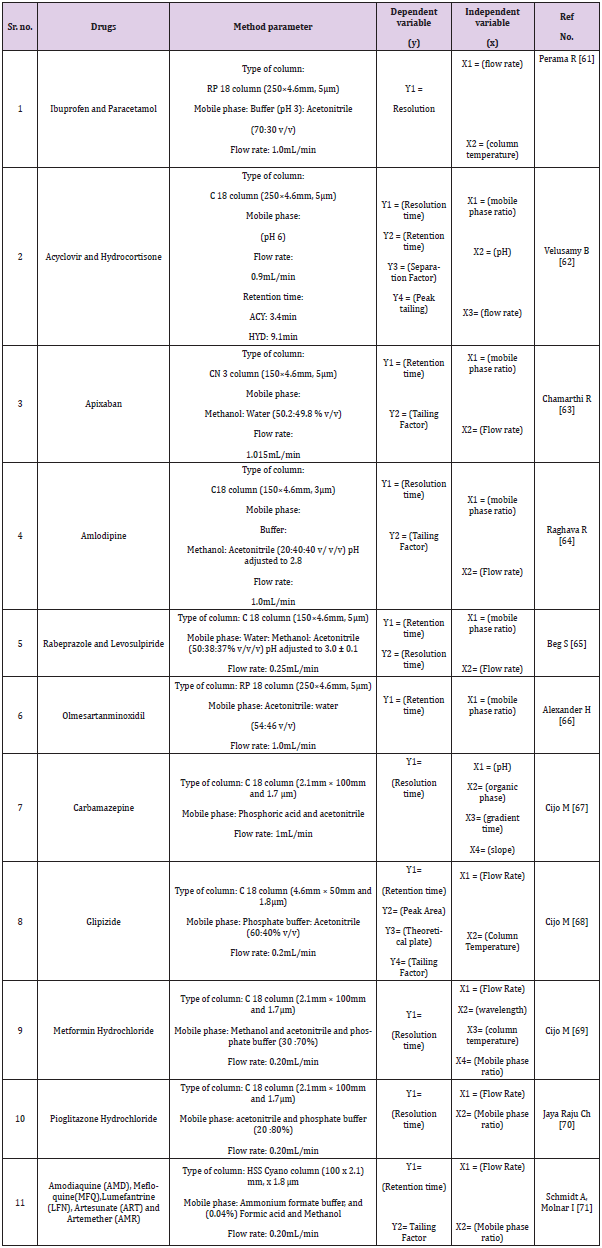Selfie takers are Nomophobic? A Correlational Study Between Selfie Addiction, Nomophobia, Locus of Control and Validation of Selfie-Liking Scale in Italian Language
Introduction
“Selfie addiction” has been defined by the American Psychological Association (APA) as “the obsessive-compulsive desire to take photos of oneself and post them on social media as a way to make up for the lack of self-esteem and to fill a gap in intimacy (Balakrishnan, et al. [4]). Selfie addiction is one of the behavioral addictions or addictive behaviors that have recently emerged, together with the internet addiction, the smartphone addiction and online gambling (Mohamed, et al. [5]). Several selfie addiction instruments have been developed, such as the Selfitis Behavior Scale developed by Balakrishnan, et al. [4], the Selfie Addiction Scale by Balaji, et al. [6] the Attitudes Toward Selfie Taking Scale by Dutta, et al. [7] the Selfie-expectancies Scale by Boursier, et al. [8] and the Selfie-Liking Scale by Charoensukmongkol [1]. In the present investigation, we decided to focus on the latter instrument, because its shortness makes it feasible to be utilized in a comprehensive battery of questionnaires aimed at assessing the cyberpsychological behaviors of individuals. This is a preliminary exploratory study which aims to validate the Italian translation of the Selfie-liking scale and place the bases for future research. There are two research hypotheses: the first intends to verify whether there is a correlation between Nomophobia and Selfie as suggested by Adawi, et al. [9]. The second research hypothesis assumes that there is a correlation between Selfie and external Locus of control: the precursors that pushed the research towards the formulation of this hypothesis were Etgar, et al. [10] who set out to distinguish the use of the selfie based on personality characteristics. In support of the formulation of the second hypothesis there is another research by Qiu Lu, Yang, Qu & Zhu with the explanatory title “What does your selfie say about you?” (Qiu Lu, et al. [11]) in which clues in selfies have been identified that are related to the degree of agreeableness, conscientiousness, neuroticism, and openness of selfie owners: also in this study some personality traits are examined and, as Rotter himself claimed, the Locus of control is a basically stable personality trait. The research hypotheses were devised based on what is known in the literature and already confirmed in the studies just mentioned between addictive behaviors and external Locus of control. The dependent variable is the score on the Selfieliking scale, the independent variables are the score on the NMP-Q and the one on the I-E Rotter scale.
Literature Review
A literature review was carried out in order to examine the salient features of the psychological constructs examined and measured by the tests used in this study. Technology is basically the sum of tools, applications and components developed to perform certain tasks and this is constantly rebuilt in accordance with the periodic needs of users (Yengin [12]). Identifying user needs and developing adequate and useful tools makes the concept of technology acceptable and tractable without questioning it. Being accepted and negotiable without being questioned is the most important proof in support of the fact that technology is a real power capable of influencing society, since it plays an essential role. Technology establishes a connection between its users and their lives, which it possesses can also be classified as biological. The research attempts to emphasize the influence of technology on biological evolution. For example, if we consider that, according to the theories of communication and interaction, people want to influence each other and interact with each other, also preferring the way they want to be perceived, it is only a consequence that then, they will tend to use social media and various platforms. This is due to the fact that people want to be part of a group or to be included in it, not to be held back and always be one step ahead of others (Güney B [13]). People, therefore, believe that technology and digital devices make them more modern and popular, making a difference between them and others. What has just been reported can be said to enjoy a high degree of accuracy, considering that in the century in which we find ourselves, the lack of digital devices is seen as an essential deprivation.
Selfie
The term “Selfie” was named word of the year in 2013 by the Oxford English Dictionary, editor-in-chief Judy Pearsall explained that database analyzes of the English words in use showed a phenomenal increase in the use of the word “selfie” (Oxford Dictionaries [14]). Refers to a self-portrait photo taken by themselves using a digital camera or smartphone to be posted on social media often times. When people take a selfie they can see what they look like in the photo and decide if they want to. show it or not. They have become a new means for self-expression and selfrepresentation. The instant distribution of an image via Instagram and similar social networks is what makes the selfie phenomenon significantly different from its previous photographic precursors (Tifentale A [15]). The aesthetic aspect is fundamental, however this does not always have to concern the image itself, but often this aesthetic character is implemented by the characteristics of the device with which the photo is taken. The selfie therefore seems to constitute an aesthetic and representative innovation in everyday photography, moreover, as an artistic photographic genre, it draws attention to the pictorial conventions at the basis of the self-portrait and the expression of identity: one cannot recognize a image like a selfie without looking at what it represents. On the other hand, as for identifying any other representative gender, the criteria alone are insufficient (Mittell J [16]). Understanding whether a particular image is a selfie (rather than just a photograph of a face) requires viewers to make inferences about the techno cultural conditions in which the photo was taken (Frosh P [17]). Often the term is applied retroactively to proto-selfies or self-portraits made in nineteenth and early twentieth century photography. These tales inevitably begin with Robert Cornelius’ selfie, a photographic self-portrait made in 1839.Another outstanding example of early attempts at dramatically staged self-portraits is that of a drowned man by Hippolyte Bayard in 1840(Sapir M [18]).
Photography can be used as a tool to build and showcase the self. Photographic self-portraits offer maximum control over our image, allowing us to present ourselves to others in a mediated way. The same problem has been encountered and faced by artists and photographers. Dawn M Wilson [19] pointed out that in the practice of self-portrait, an artist tries to have the same kind of access to his own face as any other person; that’s why mirrors are invaluable: I can’t see my face directly, but I can see my face in a mirror. Chevrier [20] states that every self-portrait, even the simplest and least staged, is the portrait of another. This “other” is a social construction as the research of Van House [21] has shown. For the author, creating, showing, visualizing and talking about images is not only the way we represent ourselves, but it contributes to the way we act, individually and collectively, by reproducing social norms. Considering that the nature of the selfie is to be shared and not contemplated exclusively by the owner, the artist and critic Paul Chan [22] stated that we realize ourselves by possessing what we want to possess, and we experience the sensation of being close to others when they possess the same properties. By “property” the author means not only tangible goods, but above all intangible things that give meaning to an inner life, such as ideas, desires or stories.
Therefore, realizing the ego is both a private and personal activity, both community and public. The individual and unique #me becomes part of #us. A selfie is above all a photographic product, a practice: an object that can send (and is often intended to send) different messages to people and communities. This subject matter can be attenuated, amplified, or changed by social media censorship, social censorship, or sender reading. While the simplest explanation is that selfies exist as emblems of a contemporary narcissistic culture, a deeper reading of them instead provides insight into the relationships between technology, self, materiality, and networks. Selfies exist in a unique moment in the history of human technology, a moment that invites consideration of the multiple worlds in which individuals live (Hjorth L, et al. [23]), the connection between one’s intimacy, public spaces and social networks.
Selfies are, at first glance, self-portraits of a person, yet they need sharing to be considered real selfies. They document the tangible material that surrounds us and, through an equal but inverse process, they offer users the opportunity to materialize the self in their daily routine, through the possibility of an immediate photographic composition, giving credit to the location, to the “here and now”, of the person who uses it. Selfies, however, are ephemeral, circulate rapidly, are observed, discarded and forgotten. This precariousness derives from the fact that they evoke a double sense of mobility, of bodies in motion in both physical and digital spaces, each with its own peculiarities and subjective experiences. Therefore, a selfie is a constellation of multiple elements of existence within the contemporary technological culture that expresses the affective tensions of online identity, at a given moment: the desire for authenticity through digitality, the need for a fleeting connection with others, the compulsion to document ourselves in spaces and places and the relational intimacy found with our devices. For Hess [24] a selfie is the assembly of four elements: the self, the physical space, the device and the network. First, selfies assume a sense of authenticity, even if they are staged in a theatrical way. Secondly, taking a photo in private or public places is a unique act of expression of the place, even if the diffusion of the photograph online diminishes the spatial aspect. Third, selfies are about our on-site and networked media technology. Finally, self-portraits assume an online audience and a language dedicated to this type of content, which means that they invite unique expressions designed by typical users of this era (Van Dijck J [25]). Selfies highlight the person, strongly representing and authenticating him as a photograph (Goffman E [26]), even if they were taken by digital devices with built-in editing and correction software and are designed for dissemination on the net. In an era where photo editing is common, selfies are generally considered spontaneous and original. In search of the perfect angle, selfies are theatrical representations, but they also invite owners to actually be in that vacation spot, to really bump into that celebrity or to have lost that weight. While questions about deception and authenticity persist (Baym NK [27]), selfies provide “real” glimpses of the body presentation of whoever takes them, generating a sense of body ethos, the testimony of an embodied self.
Little is known about the relationship between personality and selfies. Do selfies reflect the personality traits of their owners? Can you predict the personality of others based on their selfies? A study by Qiu, et al. [11] founds that self-portrait actually reflect the personality traits of their owners. Selfies related to the degree of agreeableness, conscientiousness, neuroticism and openness of the self-portrait owners have been identified. These cues included facial cues, emotions, and contextual cues such as background location. Observers’ judgment was examined and found that they were in moderate to strong agreement on the prediction of personality traits of the owners of the selfies they viewed. However, they could only accurately predict the degree of openness of the self-portrait subjects. The selfie, in its entirety, produces a sort of point of view in which the photographer and the photographed are the same person, in the same position; it is an individual who takes and publishes a photo to communicate how he perceives himself and how he wants to be perceived on a normal day, for no particular reason (Brager J [28]).Yet, once the image is uploaded online, it has a second life among the vortices and in the massive amount of data flows, subject to the web, its limits, its algorithms, debates and the whims of the users who populate it, social media policies, and the possibility of going “viral”.
Nomophobia
Human beings are fundamentally social creatures. In the past (as now) our social bond was quite strong and most of the interactions took place face to face. Due to rapid urbanization, migration and the growing number of the population, the social fabric has gradually disintegrated, leading to a situation of emptiness. Mobile phones have actually filled this void and with the help of social networks we are almost always connected to others. We now have thousands of social media friends (virtual friends), whereas in reality, we only really interact with a handful of these. Global attention remains focused on social media: we tend to use our cell phones all the time and this is creating new afflictions.
According to Ditrendia [29], a Spanish company operating in the field of digital communication, in 2017, the number of mobile users in the world was 4.9 billion, which means that 66% of the world population owns and carries with them at least a mobile device. The mobile phone has become indispensable in our lives: it is used as a personal agenda, e-mail box, and is the privileged portal for searching the infinite information on the Internet; 61% of users look at their smartphone in the first 5 minutes after waking up, 72% of users look at it at least once an hour, and 50% several times an hour (Newport F [30]).However, being constantly connected can predispose to addiction and behaviors aimed at maintaining contact with the smartphone (Kuss DJ [31]); this addiction is called “nomophobia” (NO MObile PHOne phobia, where the term “phobia” could be used improperly, because, in this way, it seems to refer to an anxiety disorder) and consists in the irrational fear of not having a mobile phone with you or not being connected to the Internet. In recent years this condition has undergone an increase due to the greater ease of acquisition of smartphones and the rise of social networks. The (sometimes mandatory) use of mobile devices negatively affects people’s health, leading to the emergence of various digital diseases. The development of mobile phones, the size of which has been made to fit comfortably in the palm of a hand and the fact that smartphones can now be used as both a phone and a computer, has increased dependence on digital services. The benefits of technology have been offset by some types of digital diseases such as cybercondria, fomo, egosurfing, blog exhibitionism, YouTube narcissism, wikipedialism, Google Pursuit, Myspace Impersonation, Photolurkig, Cheesepodding, Infornography, Facebook depression, Internet nerve (Betoncu, et al. [32-35]). Some people often look at the phone screen to avoid missing any notifications, referred to as “ringxiety”.
The term “Nomophobia” was coined by the UK Postal Service in 2008 during a study commissioned by YouGov, a UK based international internet market research and data analytics company based in the UK. The objective of that study was to evaluate the possibility of anxiety disorders due to the excessive use of cell phones. The study found that nearly 53% of 2100 cell phone users are concerned when they lose their cell phone, run out of battery or credit, or have no network coverage (Nikhita CS, et al. [36]). Studies show that nomophobia is spreading rapidly around the world and becoming a major psychological problem of our age. Nomophobia causes damage to health caused by stress, anxiety and the constant state of worry in which the individual who suffers it lives (Bragazzi NL, et al. [37]). Now, in the 21st century, modern technology affects every aspect of human life and there is no escape from it. The first mobile phone was launched in 1983, and today these tools have become a lifeline for society. According to Shambare, et al. [38], cell phones are arguably the largest non-substance-related addiction of the 21st century. College students spend more than 9 hours a day on their cell phones, which leads to addiction. It is an example of a paradox of technology: it has both the ability to liberate and to enslave. Break free from the real world and enslave the virtual world. Nomophobia has been considered a controversial term, it is defined as dependence on cell phones (Dixit S, et al. [39]) or behavior to maintain constant contact with cell phones (Forgays DK, et al. [40]). This condition basically indicates a behavioral disorder that leads to anxiety or changing mood due to dependence on their mobile device: nomophobic people begins to experience fear and anxiety when they do not have their mobile phone with them (Dixit S, et al. [39]).
King, et al. [41] re-evaluated the definition in order to increase its relevance with today’s context: they studied the presence of emotional alterations related to cell phone abuse and found that people suffering from nomophobia have significant increases in anxiety, tachycardia, respiratory changes, tremor, sweat, panic, fear and depression when separated or unable to use a cell phone, compared to healthy volunteers.
Nomophobia could be described as a syndrome analogous to substance addiction, but focusing on a certain behavior which, similar to substance use, produces a short-term reward and can persist despite harmful consequences (due to its influence on behavior). DSM-5 (American Psychiatric Association [42]) extends the category of “Substance-Related Disorders” to “Substance- Related Disorders and Addictive Disorders”, including claims related to non-substance related disorders. However, non-substancerelated behavioral addictions currently only include pathological gambling. There are still no specific and agreed diagnostic criteria for addictive behaviors such as nomophobia, although clinical experience shows that the excessive use of new technologies is a real problem that seriously affects some individuals. Once again, history repeats itself: gambling was recognized as a nosological entity in 1980, when the APA introduced it under the name of “pathological gambling”; however, its existence was recognized by professionals much earlier.
Currently only pathological gambling is recognized as a nonsubstance- related addiction, while other non-substance-related addictions (such as excessive use of the Internet, social networks and mobile phones) are still the subject of controversy and confusion. Research shows that young adults are more likely to be addicted to cell phone use. It found that the majority of teens (77%) reported anxiety when they were without a cell phone. Scientists have proposed some psychological predictors for nomophobia, which are: a negative self-opinion, young age, low self-esteem, low sense of self-efficacy, high extraversion or introversion, impulsiveness and a sense of urgency and research (Bianchi A, et al. [43]). Currently, the methods of treatment are very limited since the consideration of nomophobia as a disease is a relatively new conceptual elaboration. However, treatment modalities such as cognitive-behavioral therapy, combined with pharmacological interventions, show promising results: Tranylcypromine and Clonazepam have proved to be quite effective in treating the signs and symptoms of nomophobia. Cognitive-behavioral therapy appears to be very useful as it strengthens autonomous behavior, thus moving away from technological addictions. However, this therapeutic approach has not been confirmed by any randomized controlled trial. Another promising modality of treatment has emerged as “reality approach” or reality therapy. In this therapy the patient is advised to focus on behaviors other than the use of mobile phones, such as gardening, painting. According to Bragazzi, et al. [37], nomophobia is a type of “over-connected syndrome” because excessive use of cell phones reduces the amount of faceto- face interactions.
This significantly interferes with our social and family interactions. The term “techno-stress” (technological stress) is often used to describe a condition similar to nomophobia, that is, when people avoid face-to-face social interactions and are withdrawn, without concern for others, until they manifest a sort of depression and annihilation. Nomophobia is emerging as a threat to our social, mental and physical health. The recommendation would be to stay in the real world rather than the virtual one, re-establishing faceto- face interactions and connections, thus limiting the use of mobile phones rather than banning it since it is impossible to ignore the strength of technological progress.
Locus of Control
Conceptualized in psychology, the Locus of control is defined as a generalized attitude, belief or expectation about the nature of the causal relationship between one’s behavior and its consequences, or rather, the subjective belief about the relationship between an individual’s actions and its results. An internal Locus of control is characterized by the belief that events depend on one’s traits or behaviors, while an external Locus of control is defined as a belief that the events of one’s life are the result of luck, fate, control of other powerful factors or unpredictable due to the complexity of the situations (Rotter J [3]). Individuals with an internal locus of control consistently engage in adaptive and proactive behaviors (Rothbaum F, et al. [44]). Furthermore, Rotter [3] argued that this perception of personal control could best be conceptualized as the extent to which an individual develops the expectation that their behavior is associated with external or internal reinforcers. Consequently, he argued that individuals with an internal Locus of control were more likely to feel that they were in control in most situations or to achieve their goals through their behavior. In contrast, Rotter argued that individuals possessing an external Locus of control tended to believe that situations were controlled by external factors.
The concept was developed in an attempt to explain why some individuals ignore reinforcers (Phares EJ [45]). The fact that not all people react to reward or punishment, as expected, is attributable, according to Phares, to a generalized expectation that their actions will not contribute to obtaining the reward or preventing the punishment (external Locus of control). It is clear, then, that this construct (or reinforcement control) is indicative of the degree to which individuals believe that, as Lefcourt [46] puts it, they are actors and can determine their destinies within certain limits. Many researchers such as Phares, et al. [46-48,3] have written extensively on the Locus of control. The way in which the interaction between internal cognitive processes occurs in children is discussed by Rotter [3]. According to him, the child does not assimilate new knowledge if the action-outcome sequences are seen as random: he will not learn from his experiences unless he believes that these experiences are related to his own actions. If the events only coincide, there seems to be little reason to repeat them with the intent of learning. Spector [49] provides two obvious reasons why the “insides” perform better than the “exteriors”. First, the “insiders” have stronger expectations that effort will result in good performance and that good performance will lead to rewards. In situations where rewards follow good performance, the “insiders” exert more effort. Second, the “insiders” seek out new and relevant information more actively and thus perform better than the “outsiders” in complex tasks. Basically, people believe that external (e.g., luck or uncontrollable situations) and / or internal (e.g., one’s personality, acquired knowledge, attitude) determinants are responsible for what happens in everyone’s life, goals achieved or failed. Consequently, the locus of control, together with self-esteem, are considered socially learned and self-developed constructs.
Materials and Methods
This investigation consists of an exploratory study conducted on a population sample.
Sampling Approach
A snowball sampling approach was utilized. For the purpose of administration of the battery of questionnaires, Google Forms, an open-source tool for developing and administering ad hoc online questionnaires/surveys, was utilized. Due to the snowball sampling procedure, we were not able to compute the responder rate. There were no missing items to deal with, and, as such, no imputation analysis was necessary.
Selfie-Liking Scale
The Charoensukmongkol’s Selfie-Liking Scale (Charoensukmongkol P [1]) was utilized. The six items were translated into Italian language following Vallerand’s procedure. All items are rated on a five-point Likert scale, ranging from 1 (strongly disagree) to 5 (strongly agree).
Nomophobia Questionnaire
In order to quantitatively measure smartphone addiction level, the Italian version of the Nomophobia questionnaire (NMP-Q), translated and validated from the original instrument developed by Yildirim, et al. [2] was administered to the sample. Previous exploratory factor analysis (EFA) had shown satisfactory psychometric properties of the instrument (with a Cronbach’s alpha coefficient of 0.95, 0.94, 0.89, and 0.88 for the overall questionnaire and for its three factors-factor 1, not being able to access information; factor 2, giving up convenience/losing connectedness; and factor 3, not being able to communicate – respectively). Furthermore, validity of the questionnaire was confirmed by conducting regression analysis with the number of hours spent on the mobile phone as the regressor. The Italian version was found to have a 3-factor structure, as opposed to the initial version of Yildirim, et al. [2], and to the translated and validated versions in Spanish 16 and in Persian 17.
I-E Rotter Scale
The Internal-External (I-E) Rotter Scale was employed for assessing the externality of the locus of control.
Statistical Analyses
Once the data were collected, before commencing any data handling and processing, they were visually inspected for potential outliers. Normality of data distribution was checked by performing the D’Agostino–Pearson omnibus test, which was chosen based on the recruited sample size. Then, some descriptive analyzes were carried out with the aim to provide information about the general characteristics of the study groups in terms of reported scores. Finally, Cronbach’s alpha coefficients were calculated as estimates of reliability and internal consistency of the instrument. The following rule of thumb was employed to interpret the magnitude of the coefficient: it was judged unacceptable if < 0.5, poor in the range 0.5-0.6, questionable in the range 0.6-0.7, acceptable in the range 0.7-0.8, good in the range 0.8-0.9, and, finally, was deemed excellent if > 0.9. Correlation analysis was performed between the NMP-Q, Selfie-Liking Scale and I-E Rotter scale scores. The magnitude of the Pearson’s coefficient was interpreted following the rule of thumb developed by Hinkle, et al. [50] the strength of the correlation was deemed negligible if the r coefficient ranged from 0.00 to 0.30, low from 0.30 to 0.50, moderate from 0.50 to 0.70, high from 0.70 to 0.90, and very high from 0.90 to 1.00.Multivariate regression analyses were performed to shed light on the predictors of the overall selfie-liking scale score and the other scales scores (I-E Rotter scale). Furthermore, analysis of variance (ANOVA) was conducted for the selfie-liking scale score based on the nomophobic levels (namely, absence of nomophobia, mild, moderate and severe nomophobia). All statistical analyses were conducted by means of the commercial software “Statistical Package for Social Sciences” (SPSS for Windows, version 24.0, IBM, Armonk, NY, USA).
Results
The translated version of the instrument is reported in Table 1.
Exploratory Study
242 subjects (median age 26 years, n=182, 75.2%, females and n=60, 24.8%, males) were recruited. Mean scores for each item are reported in Table 2. Cronbach’s alpha was good, yielding a value of 0.88, which, by exceeding the conventional cut-off of 0.70, indicates that the level of reliability and internal consistency of the construct under study is more than satisfactory. The impact of dropping each item per time is shown in Table 3. Overall KMO was 0.83 (ranging from 0.77 for item 3 to 0.92 for item 5). According to the eigenvalue (3.42), a 1-factor structure could be identified, explaining up to 56.9% of the total variance (Figure 1). Selfie scores exhibited satisfactory loadings, ranging from 0.64 (for Items 4 and 5) to 0.83 (for Items 2 and 6). Further details are reported in Table 4. Selfie scores were slightly higher among females (9.64 ± 4.90 versus 8.40 ± 2.85), even though this difference was only statistically borderline. A significant correlation was found, instead, for age (r = -0.25 [95%CI -0.36 to -0.13], p = 0.0001), with younger subjects reporting higher scores than their older counterparts. Concerning the NMP-Q, the mean score was 64.79 ± 22.66. In terms of internal consistency, the Cronbach’s alpha was excellent (0.93). Stratifying according to the NMP-Q score, 2 (0.8%) subjects were characterized by absence of nomophobia; 96 (39.7%) exhibited a mild level of nomophobia; 131 (54.1%) had a moderate level of nomophobia; and 13 (5.4%) displayed severe nomophobia. A significant correlation was found between the total score of the selfie-liking scale and nomophobia (r = 0.40 [95% CI 0.28- 0.50], p < 0.0001).
Subjects without nomophobia reported, indeed, the lowest selfie scores (6.00 ± 0.00), whereas those with mild and moderate levels reported higher scores (8.00 ± 3.29 and 9.85 ± 4.41, respectively). The highest scores (14.46 ± 9.65) were reported by subjects with severe nomophobia (Figure 2).Correlation between external locus of control and selfie resulted statistically borderline (r = 0.12 [95% CI -0.01 to 0.24], p = 0.0600).At the multivariate regression analysis (Table 4), independent predictors of selfie total scores resulted nomophobia (regression coefficient 0.06, p < 0.0001) and number of hours spent on one’s own mobile (regression coefficient 0.55, p = 0.0007). Other covariates under study were not significant, with a borderline effect of age (p = 0.1942) (Table 5).
Table 5: Multivariate regression analysis showing the covariates associated with selfie scores.
Note: NMP-Q (Nomophobia Questionnaire).
Discussion
In the present study we translated and validated the Selfie-liking scale (Charoensukmongkol P [1]). The instrument demonstrated sound and robust psychometric properties, similarly to the original version (Cronbach’s alpha = 0.92, composite reliability = 0.94). As such, this questionnaire can be utilized by the scientific community to conduct further research and surveys.
Conclusion
The aim of this study was to validate the Italian translation of the Selfie-liking scale as, thanks to its brevity, it is a versatile and easily usable tool in multiple test batteries and with many items. The research also aims to explore, in a preliminary manner, the relationships between Nomophobia (NMP-Q) and use of Selfie (Selfie-liking scale) and those between use of Selfie (Selfie-liking scale) and external Locus of control (I-E Rotter scale).As argued just now, the analyzes revealed psychometric properties of the Selfie-liking scale translated into Italian similar to those of the instrument in the original language, so as to make it possible for the scientific community to use the scale in Italian. As for the research hypotheses, these have both been confirmed. Regarding the first, that is, whether there is a correlation between Nomophobia and Selfie, the statistical analyzes showed that there is a significant correlation between the total score of the Selfie-liking scale and nomophobia (NMP-Q): subjects without nomophobia have Selfielike scores reported the lowest, those with mild and moderate levels on the NMP-Q test reported the highest scores in Selfie-like, and the highest scores ever in the selfie scale story were reported by subjects with severe Nomophobia. As for the second hypothesis, the correlation between external Locus of control (I-E Rotter) and selfie is close to the significance threshold despite being close to the value of 0, therefore weak (r = 0.12). It is not established that an external Locus of control can be associated with the increased use of Selfie. The second hypothesis has been confirmed but should be explored with further future research.
For more Articles on: https://biomedres01.blogspot.com/
